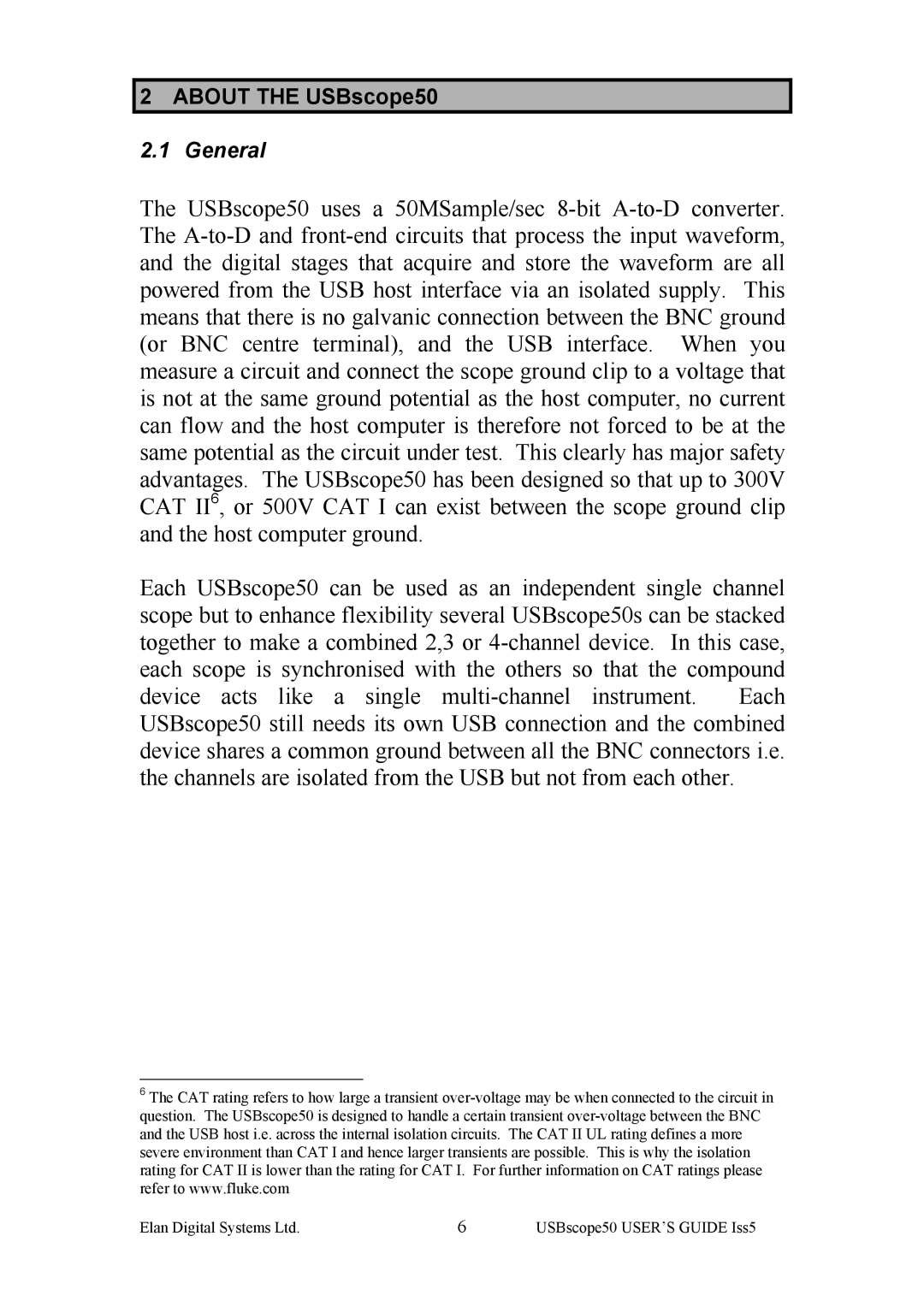
2.1 General
The USBscope50 uses a 50MSample/sec 8-bit A-to-D converter. The A-to-D and front-end circuits that process the input waveform, and the digital stages that acquire and store the waveform are all powered from the USB host interface via an isolated supply. This means that there is no galvanic connection between the BNC ground (or BNC centre terminal), and the USB interface. When you measure a circuit and connect the scope ground clip to a voltage that is not at the same ground potential as the host computer, no current can flow and the host computer is therefore not forced to be at the same potential as the circuit under test. This clearly has major safety advantages. The USBscope50 has been designed so that up to 300V CAT II6, or 500V CAT I can exist between the scope ground clip and the host computer ground.
Each USBscope50 can be used as an independent single channel scope but to enhance flexibility several USBscope50s can be stacked together to make a combined 2,3 or 4-channel device. In this case, each scope is synchronised with the others so that the compound device acts like a single multi-channel instrument. Each USBscope50 still needs its own USB connection and the combined device shares a common ground between all the BNC connectors i.e. the channels are isolated from the USB but not from each other.
6The CAT rating refers to how large a transient over-voltage may be when connected to the circuit in question. The USBscope50 is designed to handle a certain transient over-voltage between the BNC and the USB host i.e. across the internal isolation circuits. The CAT II UL rating defines a more severe environment than CAT I and hence larger transients are possible. This is why the isolation rating for CAT II is lower than the rating for CAT I. For further information on CAT ratings please refer to www.fluke.com
Elan Digital Systems Ltd. | 6 | USBscope50 USER’S GUIDE Iss5 |

